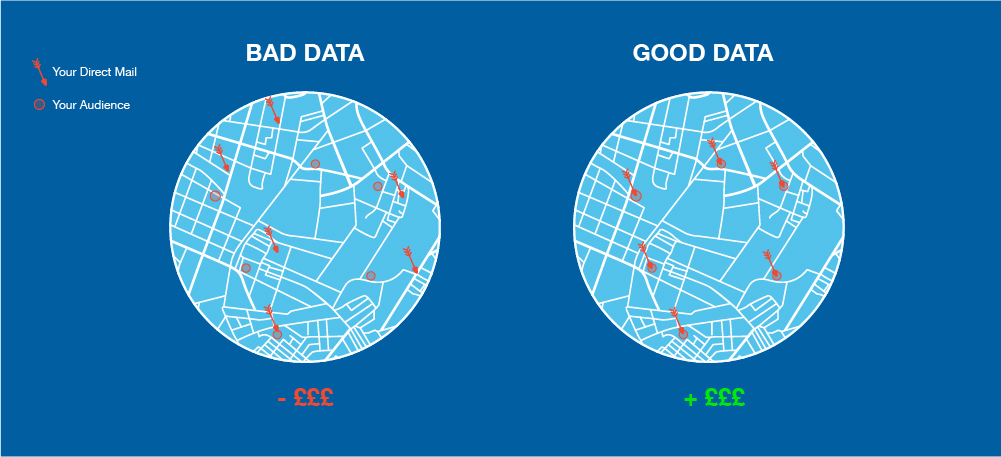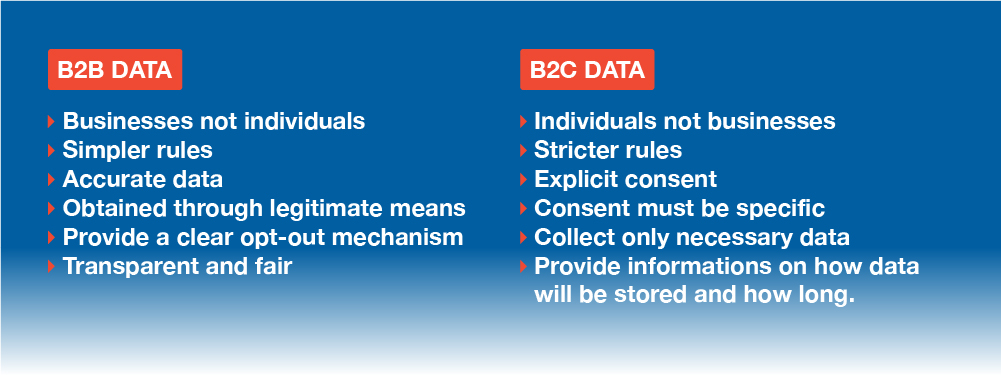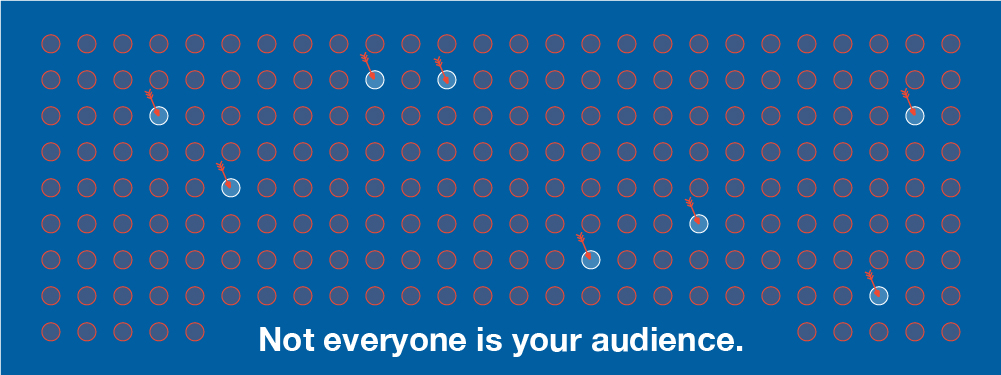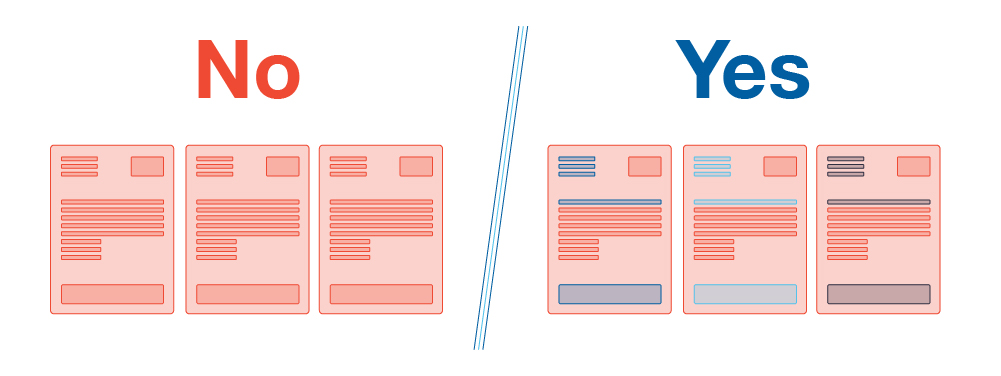Direct Mail , Marketing Data for Direct Mail: More Than Just Compliance
0 minute read
In this digital age, where emails and social media ads seem to dominate many marketers' minds, 'traditional' direct mail campaigns continue to hold their ground.
The tactile experience of receiving a physical piece of mail still has a unique ability to capture attention, convey trust, and drive action. However, the success of any direct mail campaign hinges on one critical factor: data. And surprise, surprise, that's what this blog is all about!
Why Good Data is the Foundation
When planning a direct mail campaign, it's tempting to focus solely on the creative aspects - eye-catching designs, compelling copy, and irresistible offers.
But all these efforts will fall flat if your mail doesn't reach the right people. Good data ensures that your campaign doesn't just tick the compliance boxes but genuinely connects with those most likely to engage with your business.
Imagine you're sending out a campaign promoting high-end fitness equipment. If your data isn't precise, your mail could end up in the hands of someone with no interest or means to purchase such a product.
On the other hand, if your data is carefully curated and targeted, your message lands in the mailbox of someone who is not only interested in fitness but also has the financial capacity and intent to buy.
This alignment of message and recipient is where the magic happens - where your direct mail becomes a genuinely powerful tool for pushing ROI.

Understanding Data: B2B vs. B2C in the Context of UK GDPR
Before diving into the strategies for leveraging data, it's critical to understand the regulations, particularly the differences between B2B (business-to-business) and B2C (business-to-consumer) data under the UK GDPR (General Data Protection Regulation).
1. B2B Data: The Rules
With B2B, you're dealing with businesses rather than individuals, so the regulations are somewhat different (simpler). Under UK GDPR, B2B data usage is less restrictive compared to B2C.
For example, marketing communications to corporate subscribers (such as companies, limited liability partnerships, and government bodies) don't require the same level of consent as communications to individual subscribers.
However, this sadly doesn't mean you're off the hook regarding data protection. You still need to ensure that your data is accurate, up-to-date, and obtained through legitimate means.
You must also provide a clear opt-out mechanism (such as 'Email [email protected] to unsubscribe) and diligently stick to it. Even in B2B marketing, you must respect the data subject's rights and ensure that your marketing practices are transparent and fair.
2. B2C Data: The Stricter Rules
B2C data is subject to stricter regulations under UK GDPR. When marketing directly to consumers, you generally need explicit consent to process their personal data.
This includes details like their name, address, and any other identifiable information. Consent must be specific, informed, and freely given. Simply having access to someone's data isn't enough; you need their permission to use it for marketing purposes.
Moreover, the GDPR emphasises the principle of data minimisation - only collecting data that is necessary for the intended purpose. You must also provide clear information about how their data will be used and stored and for how long. In addition, consumers have the right to withdraw their consent at any time, and you must respect this.

Compliance Alone Isn't Enough
While GDPR compliance is a non-negotiable, focusing solely on regulations misses the bigger picture (or, as Simon Sinek has coined it, the 'why'): good data is about relevance - relevance to the receiver.
The better your data, the more relevant your message will be to the recipient. Relevance drives engagement and engagement drives ROI. This is not just a key marketing principle in direct mail; it is a key marketing principle, full stop.
1. Targeting the Right Audience
Effective direct mail campaigns start by defining your ideal client - your target audience. Good data allows you to segment your audience effectively, ensuring each mailer aligns with the recipient's needs, preferences, and behaviours. This is where the true benefits of data lie - not just in reaching people but in reaching the right people.
For instance, if you're running a campaign for a luxury brand, your data should help you identify individuals who are interested in luxury products and have the finances to buy them. This level of targeting ensures that your marketing budget is spent on those most likely to convert, maximising your return on investment.
It's good to note here - your marketing is most effective when using the omnichannel approach. Therefore, try to time your DM to go out with your socials on the same subject, your radio, magazine and whatever else you're doing. Equally, to drive traffic to your website, have a QR code on the mailer.

2. Personalisation: The Key to Engagement
Most consumers expect personalisation. They want to feel that the brands they engage with understand their needs. With good data, you can personalise your direct mail campaigns to a degree that makes recipients feel valued and understood.
Personalisation goes beyond just using someone's name. It can involve tailoring the content of the mail based on past purchases, browsing behaviour, or even geographical location. The more personalised your campaign, the more likely it is to resonate with the recipient, leading to higher engagement rates and, ultimately, higher conversions.

3. Campaign Performance
Good data isn't just about who you reach - it's also about when and how you reach them. Data analytics can provide insights into the optimal timing for your campaign, the type of offers that are most likely to appeal to different segments, and the best format for your mail.
By leveraging these insights, you can continuously refine your campaigns, ensuring that each one performs better than the last.
Along with this you can use a strategy especially popular with PPC (pay per click) on Google - split-testing. For example, you have 10,000 records, send one design with one message to 5,000 and then a different design with a different message to the other 5,000.
If one is clearly more effective, drop the lesser-performing one and design something to replace it. Then, repeat the process over and over - the more you repeat, the higher your ROI should be.
Our Approach: From Data to Delivery
At Flow Fulfilment, we have experienced that successful direct mail campaigns require more than just beautiful design and compelling copy - they require a data-driven approach that ensures your message reaches the right people at the right time, in the right way. That's why we provide the complete package, including:
1. Consultancy: We begin by understanding your business objectives and target audience, helping you craft a strategy that aligns with your goals.
2. Data Research and Supply: We provide high-quality, compliant data that ensures your campaign reaches the people most relevant to your business. Whether it's B2B or B2C, our data is GDPR compliant, accurate, up-to-date, and segmented to maximise relevance.
3. Artwork: Our graphic design team develops eye-catching and actionable artwork, ensuring your business is memorable and inspiring.
4. Print and Production: We complete the entire production process, ensuring that your direct mail pieces are printed to the highest standards and sent through our machines to fold, enclose and personalise.
5. Postage: From enclosing to postage, we handle all logistics, ensuring your campaign is delivered on time and within budget. And with millions running through our mailing house each year, we pass on our postage savings to you.

What to do Next
In conclusion, a successful direct mail campaign hinges on great data. It's not just about being compliant with GDPR; it's about making sure your message reaches those who are most likely to respond, pushing engagement and maximising your ROI.
At Flow Fulfilment, we offer the complete package - consultancy, data research and supply, artwork, print, enclosing, and postage - ensuring that your direct mail campaigns are effective, compliant, and perfectly executed.
If you're considering using direct mail as part of your marketing strategy, we'd love to help. Contact us today.

